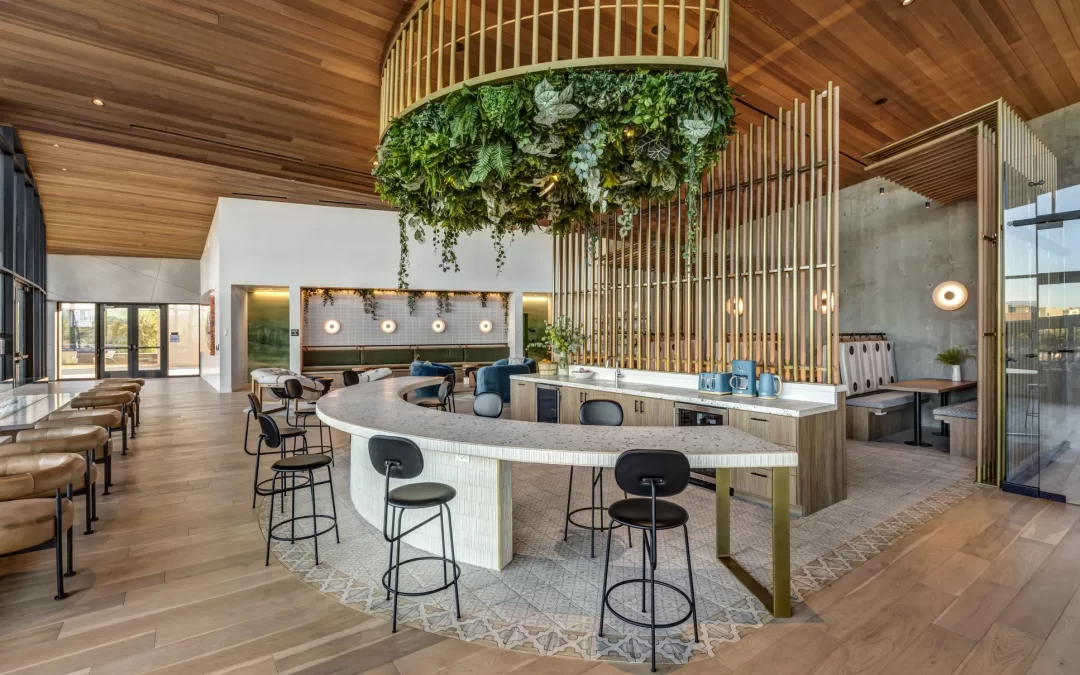Functional Outdoor Kitchen Spaces: Elevating Outdoor Dining in Hospitality
In the realm of hospitality design, the fusion of functionality and aesthetics in outdoor kitchen spaces stands as a testament to innovation and guest-centered service. The concept of an outdoor kitchen extends beyond merely bringing culinary activities outside. It encapsulates a holistic approach to guest experiences, integrating the environment, design elements, and the art of cooking to create memorable moments.
The Core Elements of Functional Outdoor Kitchen Spaces
Designing a successful outdoor kitchen space in a hospitality setting involves several key components:
- Layout and Flow: The layout should accommodate the diverse needs of a professional kitchen while ensuring seamless movement. Consideration for workflow, guest interaction, and connection to dining areas is essential. An open-plan setup allows chefs to interact with guests, adding to the entertainment while maintaining efficiency.
- Material Selection: Weather-resistant materials are crucial in ensuring longevity and maintaining aesthetics. Stainless steel, treated woods, and stone countertops are popular choices, offering durability and style. These materials not only withstand the elements but also contribute to the space’s visual appeal.
- Appliance Integration: Modern outdoor kitchens are equipped with more than just a grill. Integrating pizza ovens, refrigerators, and cocktail stations enhances functionality, providing guests with varied dining experiences. Energy-efficient and sustainable appliances align with growing eco-conscious trends in the hospitality industry.
- Ambiance and Lighting: As the sun sets, the right lighting transforms an outdoor cooking space into an atmospheric dining area. Layered lighting can highlight culinary activities while creating a cozy dining environment. String lights, lanterns, and strategically placed LED fixtures are popular choices.
- Seating and Shelter: Comfortable seating arrangements invite guests to linger, while elements like pergolas, retractable awnings, or umbrellas offer protection from the elements without detracting from the open-air experience.
Functional Outdoor Kitchens and Branding
In hospitality, how a brand integrates an outdoor kitchen into its services speaks volumes about its identity and values:
- Aligning with Brand Identity: An eco-friendly resort might incorporate sustainable materials and practices within its outdoor kitchen, reflecting its commitment to the environment. Meanwhile, a luxury hotel could create an opulent outdoor cooking area that reinforces its high-status allure.
- Creating Unique Experiences: Outdoor kitchens provide a canvas for inventive dining experiences, such as garden-to-table meals or interactive cooking demonstrations. These unique offerings can differentiate a brand in a competitive market, drawing in guests seeking novel experiences.
Design Tips for Functional Outdoor Kitchen Spaces
For those aiming to design or enhance outdoor kitchen spaces within hospitality venues, here are some pro tips:
- Understand Your Climate: Adapt the design to handle local weather conditions. In regions where it rains frequently, install appropriate drainage systems and consider covering areas where food is prepared or served.
- Enhance Guest Interaction: Design the kitchen space to facilitate interaction between chefs and guests. Counter designs or bar seating around the cooking area invite conversation and engagement.
- Add Local Flavors: Infuse the design with elements reflective of the local culture and cuisine. This could include cooking with locally sourced ingredients or incorporating regional architectural styles in the design of the space.
- Flexible Space Utilization: Outdoor spaces should be adaptable. Consider modular units or multi-functional furniture that can cater to different events or guest needs.
Case Study: A Successful Outdoor Kitchen in Hospitality
Consider a coastal resort that incorporated a series of outdoor kitchen spaces along its beachfront. Using locally quarried stone and timber from sustainable sources, the design harmonizes with the surrounding environment. Each kitchen features fire pits, grills, and pizza ovens, enabling diverse culinary options. By hosting weekly themed nights centered around the outdoor kitchens, the resort attracts both guests and local residents, fostering a community atmosphere and enhancing brand loyalty.
Conclusion
Functional outdoor kitchen spaces are more than a trend; they are strategic investments in guest satisfaction and brand differentiation in the hospitality industry. By combining practical design with innovative culinary offerings, hotels and resorts can offer enriching guest experiences that not only meet expectations but exceed them, ensuring lasting impressions and fostering returning clientele. Whether enhancing existing spaces or creating anew, thoughtful design and execution are key to unlocking the full potential of outdoor kitchen spaces in hospitality.



